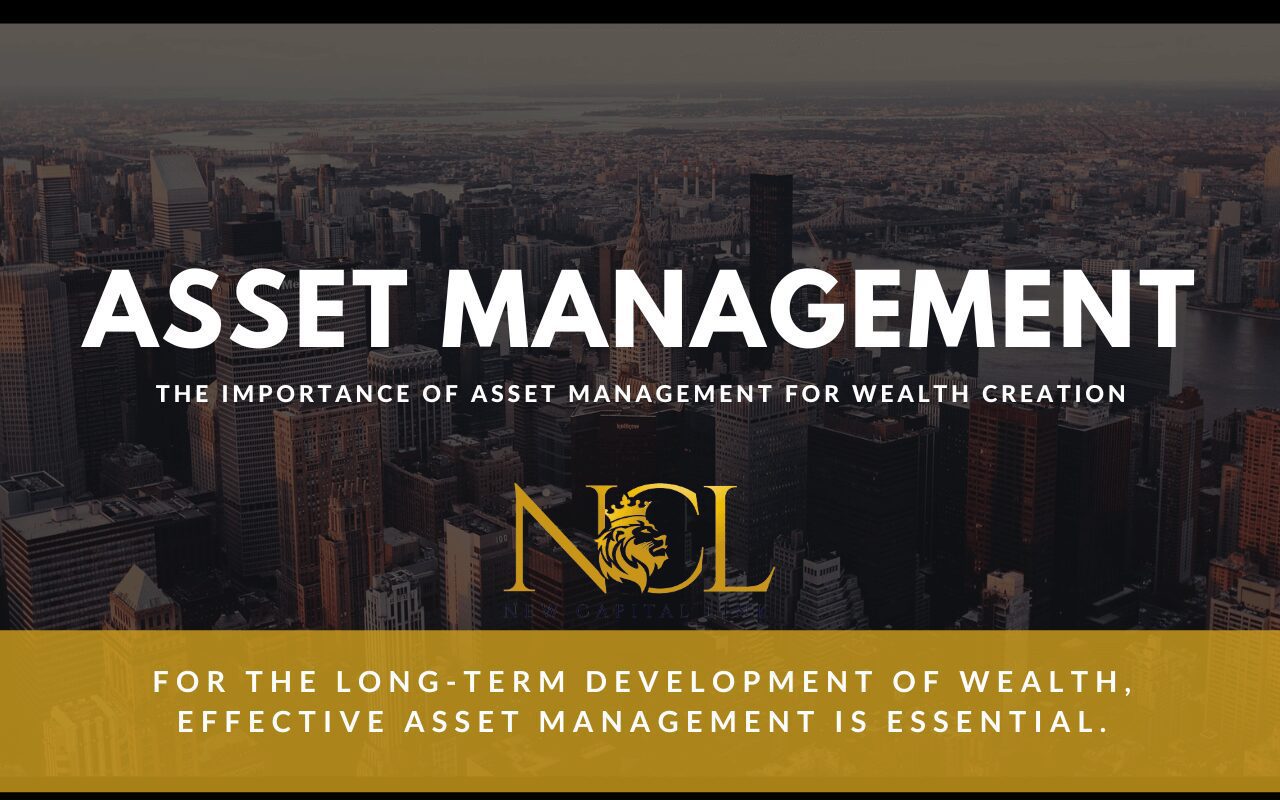Asset management involves a thorough analysis of your current investment portfolio and personal financial circumstances. It tries to develop a focused financial strategy for managing assets and building wealth armed with knowledge about investors’ risk tolerance, goals, and lifestyle. By selecting wise investments for customers, asset managers attempt to help clients increase and protect their money. The process of building wealth involves making investments in a variety of asset types where the money will go towards meeting essential demands. These investments have to be self-sufficient and able to produce a reliable source of income, assisting the investor in realising their objective.
Importance of Asset Management for Wealth Creation
Because it helps investors create and keep their money by selecting wise investments on their behalf, asset management is crucial for wealth growth. To reduce risk and increase returns for their customers, asset managers may invest in several asset classes and manage a diversified portfolio. The practice of investing in multiple asset classes with the aim of achieving personal financial objectives is known as wealth building.
In other words, asset management helps investors accumulate wealth by making smart investment decisions on their behalf. Wealth building is the technique of investing across a variety of asset classes with the goal of reaching individual financial goals. These assets should enable a person to accomplish their objectives and provide a reliable source of income.
Asset Management vs Wealth Management
Despite the frequent use of such terminology, asset and wealth management are not identical. Asset management just focuses on managing investments to enhance returns and limit risk, whereas wealth management offers a more comprehensive approach that includes financial planning, tax planning, and estate planning.
Working with a team of financial specialists to build a complete strategy for managing a person’s or organisation’s money is one part of wealth management. This might involve making a budget, defining financial objectives, managing debt, investing in assets, and making plans for retirement and other future costs. On the other side, asset management concentrates more heavily on investment management. While it is an important part of wealth management.
Investment Portfolio Management Strategies
Strategies for managing investment portfolios are created to assist investors in maximising profits while lowering risk. The following are some methods that investors might employ to manage their stock portfolios:
- Active portfolio management strategy: In this technique, securities are bought and sold in reaction to shifting market circumstances. Investors that are prepared to assume more risk in exchange for perhaps bigger rewards are best suited for this technique.
- Passive portfolio management strategy: This approach prevents frequent stock buys and sales.
- Diversification: One element of this risk reduction approach is the investment in a variety of asset types. By distributing your assets to different asset types, you can reduce the effect of any single investment in terms of its overall performance.
- Asset allocation: This strategy involves dividing investments among different asset classes based on an investor’s risk tolerance and investment goals. You may build a portfolio that is suited to your unique needs by distributing your assets among several asset types.
- Rebalancing: This approach requires you to rebalance your investment portfolio on a regular basis, in order to ensure the appropriate allocation of assets according to your financial objectives.
- Dollar-cost averaging: Regardless of market circumstances, this method entails investing a certain sum of money at regular periods. You may benefit from market variations and possibly lessen the effect of short-term market volatility on your overall portfolio by investing a certain sum of money at regular periods.
- Buy-and-hold strategy: This technique entails purchasing stocks and holding them for an extended length of time. Long-term stock ownership may allow you to take advantage of compounding’s benefits while avoiding the short-term volatility brought on by frequent trading.
Investment Risk Management Techniques
Investment risk management techniques are critical for long-term wealth creation. Here are a few common techniques used in investment risk management:
Avoidance: This technique involves avoiding activities that may incur injury, sickness, or financial loss.
- Asset Allocation: As mentioned earlier, asset allocation is an important tool for managing risk. By diversifying investments across different asset classes, investors can reduce their exposure to any one particular area and minimise risk.
- Retention: This technique involves acknowledging and accepting a risk as a given. Usually, this accepted risk is a cost to the investor.
- Hedging: Hedging involves taking positions in different investments that are negatively correlated with each other in order to offset potential losses.
- Stop-Loss Orders: A stop-loss order is a type of order that is placed with a broker to sell a security if it drops below a certain price. This can help limit potential losses if a security experiences a sudden decline in value.
- Risk-Adjusted Returns: Evaluating investment returns in the context of the amount of risk taken on can help investors better understand the true value of their investments.
Alternative Asset Management Solutions
Alternative Asset Management Solutions refer to investment strategies that differ from traditional investment vehicles such as private equity and bonds. Commodities, real estate, private equity, hedge funds, and other non-traditional assets could be used in these strategies. Consider the following important aspects of alternative asset management solutions are,
- Diversification: By investing in non-traditional assets that have a low connection to traditional markets, Alternative Asset Management Solutions give investors the chance to diversify their portfolios and perhaps lower overall risk.
- Potential for higher returns: Alternative Asset Management Solutions may offer the potential for higher returns than traditional investment vehicles due to the unique features and structures of these investments. Higher gains, however, come at a higher risk and may not be suited for all investors.
- Specialised expertise: Alternative Asset Management Solutions require specialized expertise to manage effectively. Alternative asset investment managers have in-depth understanding of the specific characteristics of these investments and can discover the greatest possibilities to create profits.
Institutional and individual investors: Alternative Asset Management Solutions have historically been utilised by institutional investors like pension funds and endowments, but individual investors can also gain access through ETFs and mutual funds.
Complex structures: Alternative Asset Management Solutions can have complex structures and unique characteristics that require careful consideration before investing.
Potential for long-term growth and stable income: Alternative Asset Management Solutions can offer opportunities for long-term growth and stable income streams, particularly in real estate and infrastructure investments.
Higher risk: Alternative Asset Management Solutions may come with higher risk due to the illiquid nature of many of these investments and the potential for market volatility.
Not suitable for all investors: Alternative Asset Management Solutions may not be suitable for all investors and require careful consideration of an individual’s financial goals, risk tolerance, and investment experience.
Final thoughts
For the long-term development of wealth, effective asset management is essential. Individuals and organisations may manage their investment portfolios and spend their resources wisely by consulting with seasoned financial advisors and using cutting-edge investment technologies. A larger variety of investment possibilities, including alternative assets, which have greater potential returns but also higher potential dangers, may be accessed with the help of effective asset management. Investors may maximise profits, reduce risk, and amass long-term wealth by using efficient investment portfolio management strategies, investment risk management approaches, and alternative asset management solutions.






